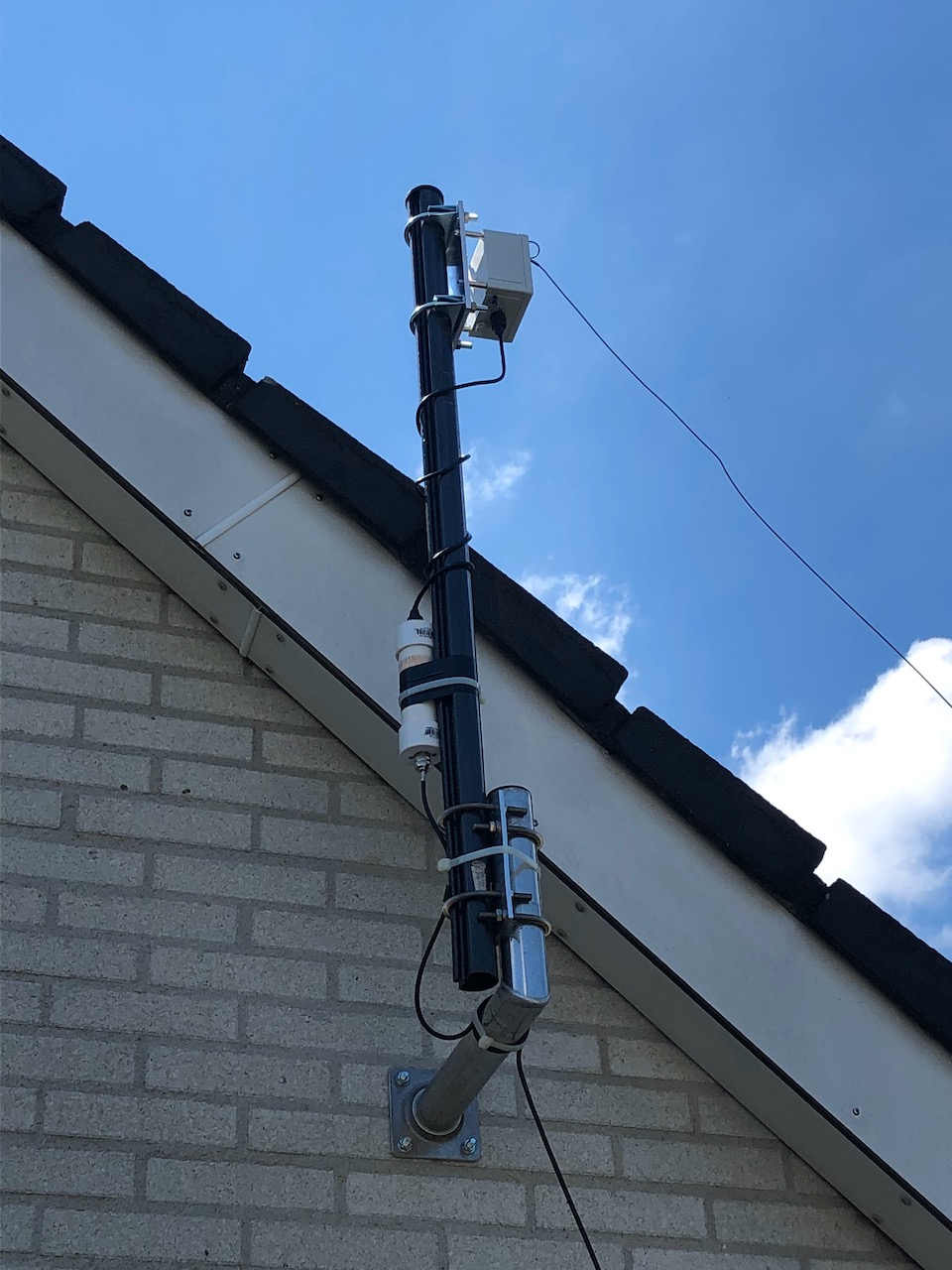For some years, I have been using an interesting and popular type of antenna: end-fed antennas. These antennas are simple yet incredibly versatile, making them a favorite among amateurs and seasoned operators alike.
As you can see in my antenna page on this site; I’m using an endfed antenna already. I’m in the middle of changing this antenna for a version that can handle more power. In a future post I will discuss my experience with this, so stay tuned! 😉
In this blog post however, we’ll dive into the basics of end-fed antennas, how they work, and why you might want to give them a try. So, let’s jump right in!
What is an End-Fed Antenna?
An end-fed antenna is a type of wire antenna where the feed point is located at one end of the antenna wire, rather than at its center (as in a dipole antenna).
This configuration allows for easy deployment, as the antenna can be hung vertically, horizontally, or even as a sloper. The most common end-fed antennas are the half-wave and random wire antennas.
Half-Wave End-Fed Antennas
A half-wave end-fed antenna, as the name suggests, has a length that is half the wavelength of the desired operating frequency. At this length, the impedance at the feed point is very high, typically around 2,500-3,000 Ohms. To match this impedance to the 50 Ohm impedance of your transceiver, you’ll need a matching network, often in the form of a 49:1 or 64:1 impedance transformer.
This type of antenna is resonant, which means that it has a low SWR (standing wave ratio) at its design frequency. As a result, it requires minimal tuning, if any, and is relatively efficient in terms of power transfer.
The half-wave end-fed antenna is popular for its simplicity, low-profile nature, and ease of deployment, making it an excellent choice for portable and stealth operations.
Random Wire End-Fed Antennas
Random wire end-fed antennas have lengths that do not correspond to any specific wavelength.
These antennas are often used in situations where space is limited or when a quick, temporary setup is needed. To make these antennas work, you’ll need an impedance matching device, such as a 9:1 UnUn (unbalanced to unbalanced transformer), and an antenna tuner.
The random wire end-fed antenna is not resonant, meaning that it has a high SWR on most frequencies.
The tuner is essential for matching the antenna’s impedance to your transceiver and for minimizing SWR.
Although less efficient than resonant antennas, random wire end-fed antennas offer great flexibility and can still provide surprisingly good performance.
Advantages of End-Fed Antennas
Easy deployment: End-fed antennas require only one high support, making them perfect for portable operations or when space is limited.
- Low visibility: With their simple wire design, end-fed antennas are ideal for stealth installations, as they can easily blend into their surroundings.
- Multi-band capability: Some end-fed antennas, particularly those with random wire lengths, can operate on multiple bands with the help of an antenna tuner.
- Versatility: End-fed antennas can be configured in various ways, such as horizontal, vertical, or sloping, allowing you to adapt to different situations and propagation conditions.
End-fed antennas are a fantastic option for radio amateurs looking for a simple, versatile, and effective antenna solution. With their ease of deployment and low-profile design, they’re perfect for portable or stealth operations.
Whether you’re a seasoned operator or just starting your amateur radio journey, an end-fed antenna might be just what you need to enhance your on-air experience. Give it a try!

